Common Fillet Boards
Fillet boards can be made from a variety of materials, however the feature they have in common is a flat surface on which you can clean your fish without dulling your knife. Regardless of which one you pick up or find available at a cleaning station, when you are ready to clean you fish it is also time to start thinking about what those fillets are going to taste like when fixed for dinner, whether deep fried, pan fried, grilled or baked.
What Makes the Best Fillet Board
The best fish cleaning board is the one that allows you to clean your fish safely, consistently and easily, ending with no bones and clean fillets. Anglers say their biggest concern is preventing the fish from slipping or sliding amidst all the slime, in order to meet this goal. Anglers were asked if they could design the perfect fillet board what it would be like? They described the following: they wish there was a fillet board that anchored the head and lay the fish out in fillet position, to prevent slipping, reduce risk of abrasions or cuts and one that they could cut away from an anchored head.
Our research identified has identified the TWO WAY Fillet board and clamp system that does just that. Patented and designed to hold the the fish by the mouth not the tail, anchoring your fish on the board in perfect fillet position. This produces no slipping, sliding and provides the most consistent/efficient filleting possible fish after fish. The clamp replaces your hand in and around the mouth which means you get the safest most efficient fillet process possible. If you like to keep and clean fish you should check it out, all of us here at PFT are using this system. We recommend TWO WAY Fillet, we have been using this product since 2017.
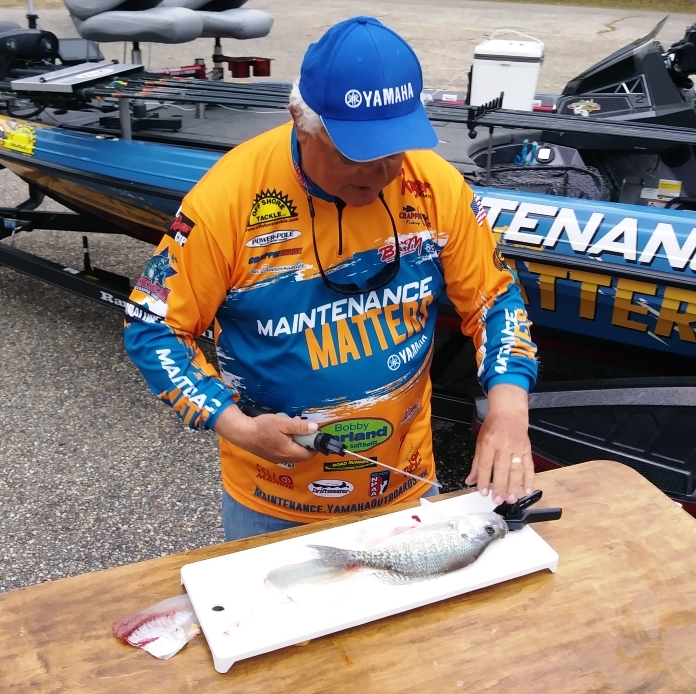
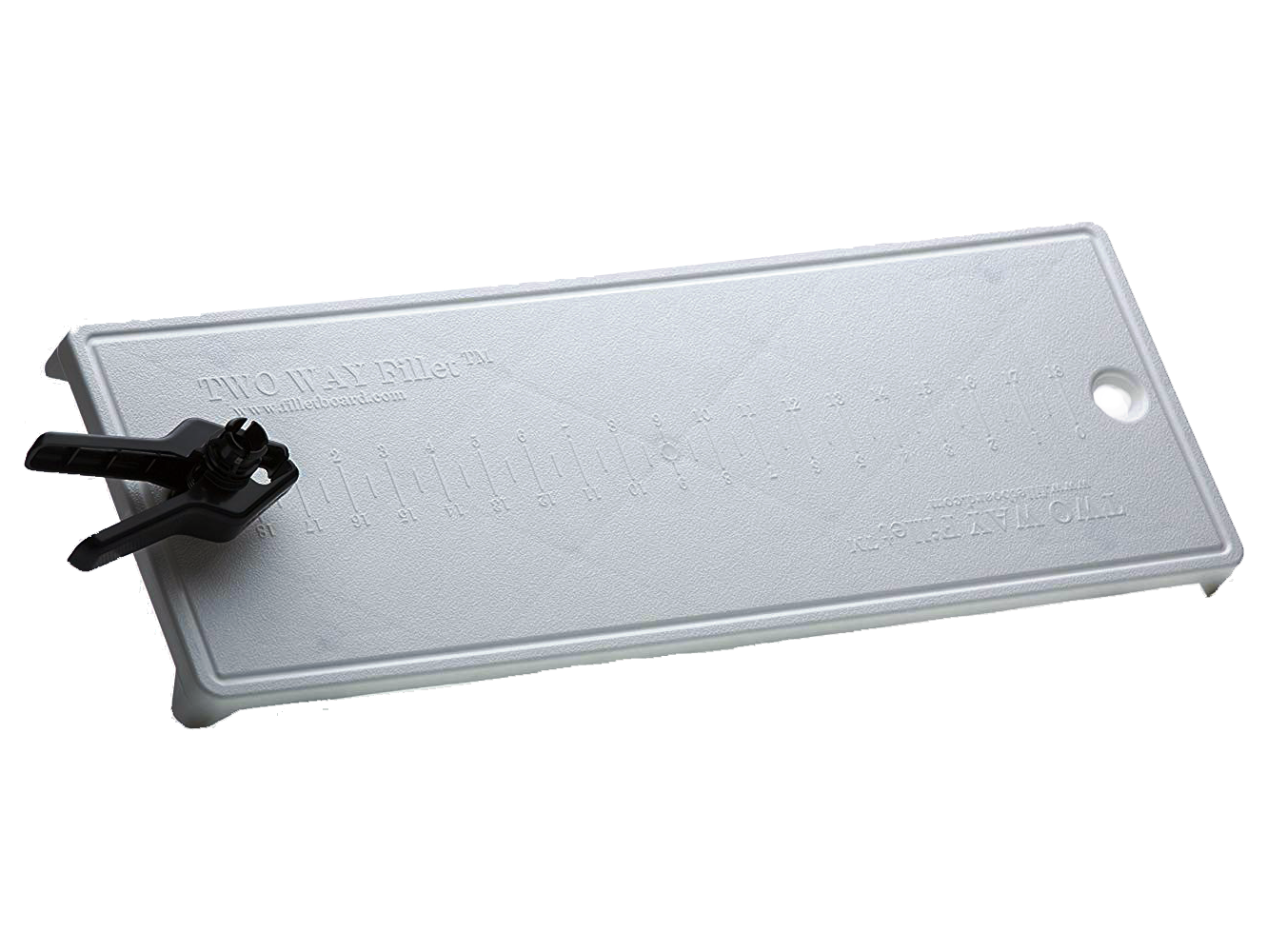
Key features of TWO WAY Fillet:
- Anchor your fish in perfect fillet position
- TWF clamp anchors fish by mouth not the tail
- Clamp easily unsnaps, while holding the fish, and flips over for side two
- Five slip resistant rubber feet secured to bottom of boardT
- These feet raise the surface of board to about 1 inch, perfect for hand to slide along side
Click on the link above to read more about TWO WAY Fillet...
We are an Amazon Affiliate. If you purchase a product we recommended or another product while on Amazon, we may receive a small commission. Our staff recommends items that we have personally owned, used/tested, researched or we have fished with trusted anglers who recommend them. These products will not cost you any more than what is posted.
Other Common Fillet Boards
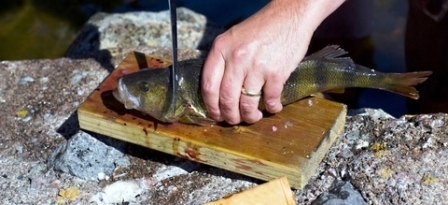
Wooden Cutting Boards
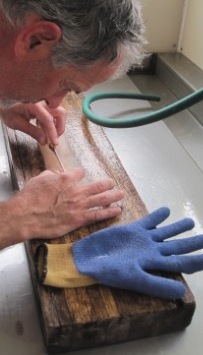
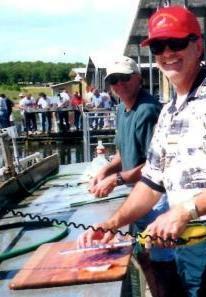
Wooden cutting boards are in widespread use and are most common, primarily because wood is so easily available. Shown above left is a 24 inch section of a 2"x 8" wooden board commonly found at fish cleaning stations. The picture on the right is a wooden kitchen cutting board purchased from a local kitchen store. Wood can get scored by your knife blade in the cleaning process but will cause minimum dulling of your blade edge. A two inch thick board is ideal because this thickness raises the fish cleaning process high enough so that the anglers knife blade can remain parallel to the board surface, and allow the anglers hand and knuckles to glide smoothly without hitting the surface below.
Common Wooden Cutting Board

This Evans Sports board features a metal clamp designed to hold the fish by the tail so that you can remove the scales from your fish.
Larger wooden boards are available on the market. Many of these can be found made from fine wood like oak, maple, cherry or other hardwoods. Local craftsmen and women also can be found that will custom make you a fillet board. Pictured below is a gift from a close friend of PFT.
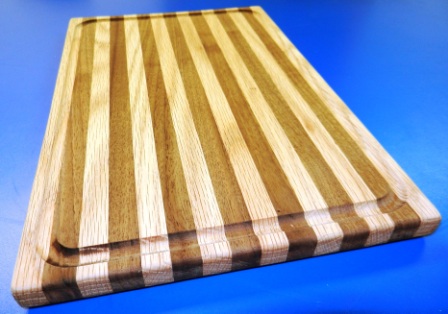
Ron's Custom made Cutting Board
HDPE Cutting Boards
Becoming increasingly popular are cutting boards made from HDPE. HDPE (High-density polyethylene) is a polyethylene thermoplastic. You are familiar with plastic bags used by many retail companies. These are also made of polyethylene but are of course very thin. When HDPE is used to make fillet boards, it means you get a board that will be impact, wear and chemical resistant. Even though they resist abrasion, they will not dull your fillet knife. Most commercially available cutting surfaces that are not made of wood but are made from HDPE. HDPE won't crack or weather like wood does when it ages.

Common Features
The most common features that can be found on fillet boards are:
- Clamp for holding the fish
- A Pin or Spike or Nail for holding the fish
- A Slot to hold your fillet knife.
- Ruler to Estimate Fish Length
- Drip groove for fluid, blood, water or other droppings
Clamps
The majority of clamps found on commercial cutting boards have a hinge that is parallel to the board's surface. (Think of a common clip board.) This easily clamps onto the tail of the fish, and is a hold over from the days of cleaning fish when the first step was to remove the scales. These clamps most often appear on boards that are 6-8 inches wide and 18-24 inches long.

Plain - many fillet boards sold today are plain boards - do not have any special clamps or pins. It is common for fillet boards to have a ruler and a groove around the edge to collect drippings. These plain boards can be small or large depending on the needs of the angler and the size of the fish expected to be caught and cleaned.

Check out these other informative pages that discuss a variety of topics important for cleaning your fish: